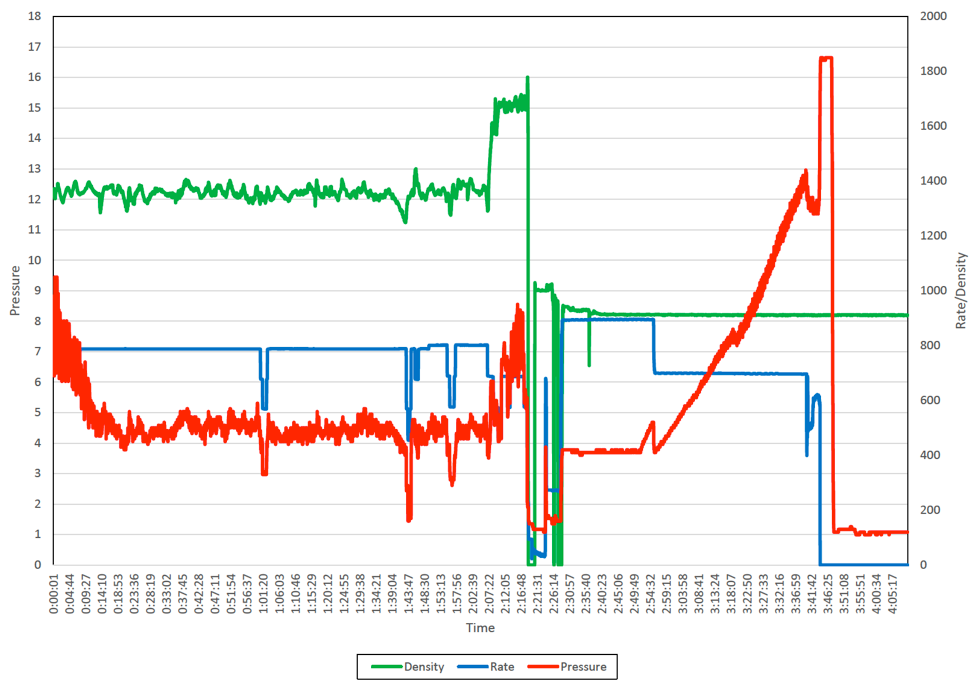

In Midland County, Texas an operator used a 5-well pad to test the effectiveness of the SHIELD BOND spacer system to achieve cement returns on the typically problematic intermediate (9 5/8-in.) casing strings. Historically, getting cement to circulate to the surface when cementing intermediate casings in Midland County has been a challenge.
The cementing service provider replaced conventional spacer (water) with the SHIELD BOND (Wellbore Shielding®) spacer system. The effectiveness of SHIELD BOND system was tested by comparing the results of the intermediate cement jobs pumped with and without SHIELD BOND spacer. On two of the five jobs, SHIELD BOND was pumped ahead of the cement. On the three other jobs, water was utilized as the spacer.
The primary KPI for this field trial was to achieve cement returns back to the surface.
The five wells on this pad had total depths ranging from 5162-ft. to 7465-ft. and the mud weight was a consistent 10 lb/gal. On the water spacer cement jobs, the lead cement density was 11 lb/gal and the tail cement density varied from
13.2-14.2 lb/gal. On the SHIELD BOND jobs, the lead cement density was only reduced to 11.9 lb/gal and the tail cement density was a heavier 14.8 lb/gal. The water volumes were 20, 40 and 50 bbls. On both the SHIELD BOND jobs, and the density was 10 lb/gal and the spacer volume was 50 bbls.
On SHIELD BOND spacer wells, full cement returns were observed in both. In only one of the three non-SHIELD BOND jobs, some spacer was observed returning to the surface, but no cement was observed. On the other two jobs, not even spacer was circulated. Even with the heavier, less costly lead cement run on the SHIELD BOND jobs, cement was circulated back to the surface.
